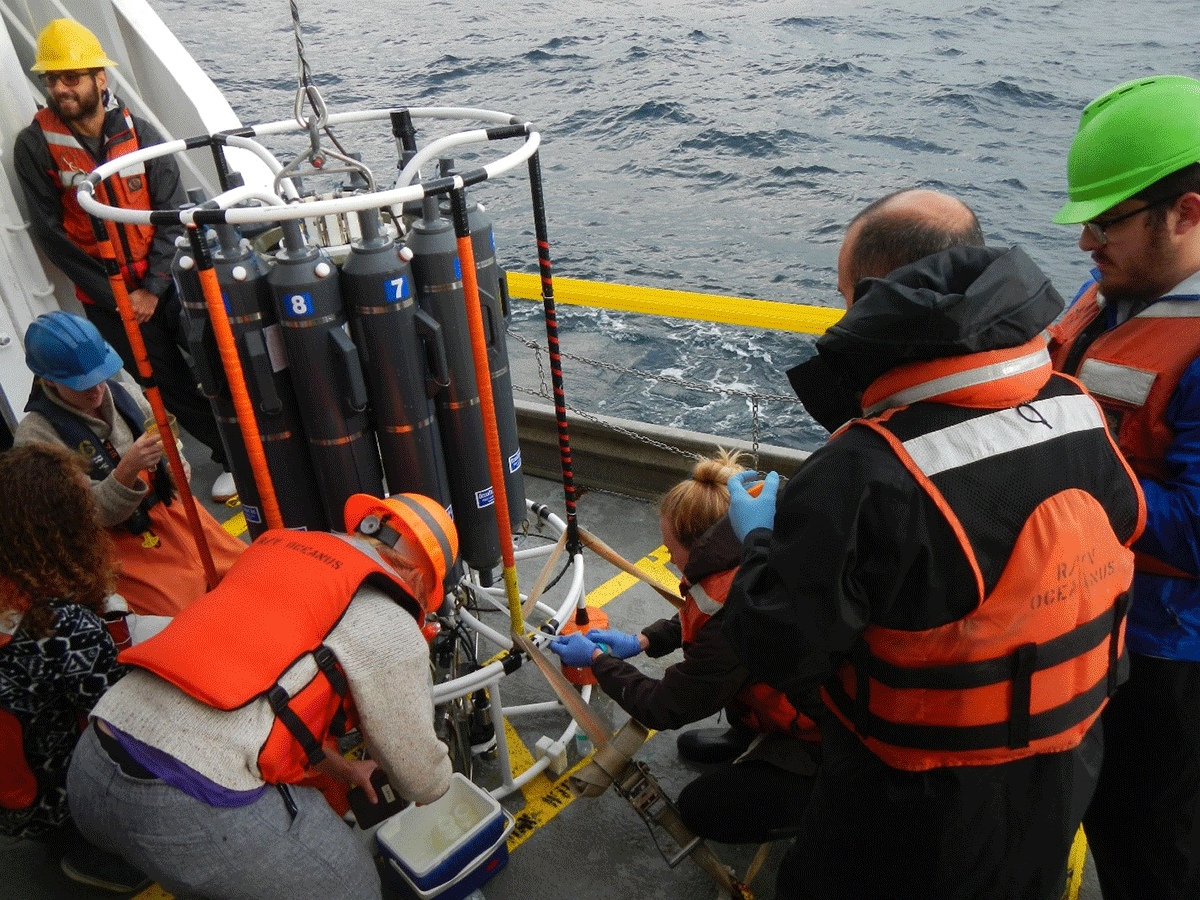
Dr. Ron Kiene returned with his team from the subarctic North Pacific Ocean in late August. The 17-day research cruise aboard the research vessel Oceanus was similar to the cruise Dr. Kiene led to the same area in 2016.
"One thing we did differently this year was setting a drift station," Dr. Kiene said. "When we were off the coast of Oregon, we set out a drifter. About 30 feet of mesh hung vertically in the water column to allow us to continuously sample the same water as it drifted with the current."
Dr. Kiene considers the cruise a success.
"I was very happy with the way it went," Dr. Kiene said. "I was in the lab a great deal of the time conducting radio-isotope work. Graduate student Tara Williams was also able to collect some unique data on another sulfur gas created from DMSP known as methanethiol. There's so many fascinating aspects of DMSP."
The research focus aboard the cruise was the natural chemical DMSP, which is produced by phytoplankton. DMSP is also decomposed into two volatile sulfur gases that transfer from the ocean to the atmosphere. Once in the air, these sulfur gases oxidize into tiny particles of sulfuric acid that affect atmospheric chemistry and potentially climate by affecting the amount of sunlight reaching the Earth’s surface.
"It is important to understand how these compounds are cycled in all regions of the ocean, especially in locations where these compounds are known to reach high concentrations," Dr. Kiene explained. "The sub-arctic Pacific , where this cruise took place, is one such area."
With a great deal of the data collection from samples done aboard the research vessel, Dr. Kiene is looking to present some of the findings at upcoming meetings.